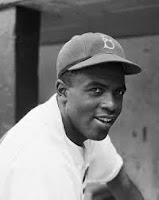This Week in Wrigley History (May 14–May 20)
May 15, 1960
In his first start since being acquired from the Phillies, Cubs pitcher Don Cardwell has the most miraculous debut in Cubs history.
He is facing the St. Louis Cardinals in the second game of a double header at Wrigley Field. Stan Musial was given the game off, but the Cardinals lineup still boasts big hitters like first baseman Bill White, third baseman Ken Boyer, and centerfielder Curt Flood.
In the first inning, Alex Grammas coaxes a walk and reaches base. After that, Cardwell mows down all comers, including Stan Musial who comes off the bench to pinch hit in the 8th. Stan the Man becomes one of Cardwell’s seven strike out victims.
The Cubs get all the offense they needed in the bottom of the fifth when backup second baseman Jerry Kindall knocks in Frank Thomas on a groundout. They later add a few more runs in the 6th (thanks to an Ernie Banks home run), and another in the 7th.
Cardwell enters the ninth inning with a four run lead. The first two hitters he faces are pinch hitters. Carl Sawatski lines out and George Crowe flies out. That brings up leadoff man Joe Cunningham. When Cunnignham hits the ball to left field it looks like it’s going to ruin Cardwell’s no-hitter, but Cubs left fielder Moose Moryn makes a great running catch, allowing Don Cardwell to achieve immortality.
Unfortunately for Don, it was all downhill from there. He went 7-14 the rest of the year. Two years later he was traded to the Cardinals. Among the players the Cubs got in return: Cardwell’s No-hitter opposing pitcher, Lindy McDaniel.
###
May 14: In 1960, Dick Ellsworth shuts out the Cardinals. He scatters six hits, all singles, to win the game 4-0.
May 15: In 1971, Billy Williams hits his 300th career home run. It comes in the first inning of the game, and gives Fergie Jenkins the cushion he needs to eventually win the game 6-4.
May 16: In 1958, the San Francisco Giants are in Chicago for the first time as a West Coast team. Willie Mays hits a home run, but the Cubs come back in the ninth inning to win the game 6-5. Lee Walls knocks in the winning run on a single to center. In 2001, Sammy Sosa hits his 400th career home run in a 6-2 Cubs loss to the Astros. In 2008 Wrigley Field season attendance passes the million mark in only the 25th home date of the season, the fastest in team history.
May 17: In 1929 Hack Wilson launches a grand-slam off his arch-nemesis Jim Donohue of the Reds. (In the future the two will engage in multiple fist-fights.) In 1959, Roberto Clemente of the Pirates comes closer to hitting the centerfield scoreboard than any other player in Wrigley history. He hits it off Bob Anderson.
May 18: In 1951, Jack Cusick hits an inside-the-park grand slam against the Phillies in a Cubs 18-9 blowout.
May 19: In 1961, Glen Hobbie throws a shutout, and Ernie Banks drives in the only run of the game in a victory over the Cardinals. In 1987, Harry Caray returns for his first game since his stroke. President Reagan calls him.
May 20: In 1935, Babe Ruth comes to Chicago for the last time as a player, as a member of the Boston Braves. In 1967, the Cubs win a 20-3 blowout versus the Dodgers. Randy Hundley hits a grand slam, and teammates Beckert & Phillips also homer.
###
May 18, 1947
Jackie Robinson made his first career appearance in Chicago, in front of a sold out Wrigley Field crowd. (Among the people in the crowd: a young Ronnie Woo Woo attending his first Cubs game). The Dodgers beat the Cubs 4-2, but that doesn’t even begin to tell the story of that day.
A few months earlier, when the Dodgers had announced that Jackie Robinson would be playing for them that season, Cubs players held a closed door vote about whether or not they would take the field when they played against the Dodgers. The final vote tally was not released, but the Cubs voted no. Their owner, Phillip Wrigley, also voted no. He was afraid that the white North Side neighborhood surrounding Wrigley Field would rebel and take it out on the Cubs. The players and owners were overruled by Commissioner Happy Chandler, who forced everyone to accept Robinson or be barred from the game.
Needless to say, they went along reluctantly. The Cubs were a team that featured many Southerners like catchers Clyde McCollough and Dewey Williams, and pitchers Claude Passeau, Bill Lee, and Hank Wyse. This was not a good combination for Jackie Robinson when he stepped to the plate. Hank Wyse, an Oklahoman, explained what happened in the book “Wrigleyville.”
“I remember the first game against him (in Brooklyn). I don’t remember who started (It was Wyse himself), but every time he come up, we knocked him down four times. The pitcher would stay in there until it was his turn to come up, and they’d knock Robinson down four more times. When it come time for the pitcher to come up, we’d take him out and let somebody else in, ’cause you knew darn well that the Dodgers were goin to knock him down. So we changed pitchers during the ball game. Paul Erickson was the last pitcher, and the last time he came up, Erickson throwed it at his head, and he went down. He got back up, and he stuck one in his ribs. All four times he got up they knocked him down. All four pitches. He didn’t say nothin. He just got up and trotted down to first.”
By the time Robinson came to Chicago on May 18, Cubs pitchers were no longer throwing at him. Jackie faced a tough pitcher that day (Johnny Schmitz) and only put the ball in play one time, but every move he made was cheered by the African Americans in the crowd–people that had rarely attended games at Wrigley Field before.
The crowd numbered 46,572; the largest paid attendance in the ballpark’s history.
(A young Mike Royko was also in attendance that day, and wrote a great column about it on the day that Jackie Robinson passed away–you can read it here.)







[…] [This Week In Wrigley History] This Week in Wrigley History (May 14–May 20) […]
[…] [This Week In Wrigley History] This Week in Wrigley History (May 14–May 20) […]
[…] fitting that today begins his last visit here, because This Day in Wrigley History will point out that in 1935, an even bigger Yankee icon made his last trip to Wrigley Field on this […]